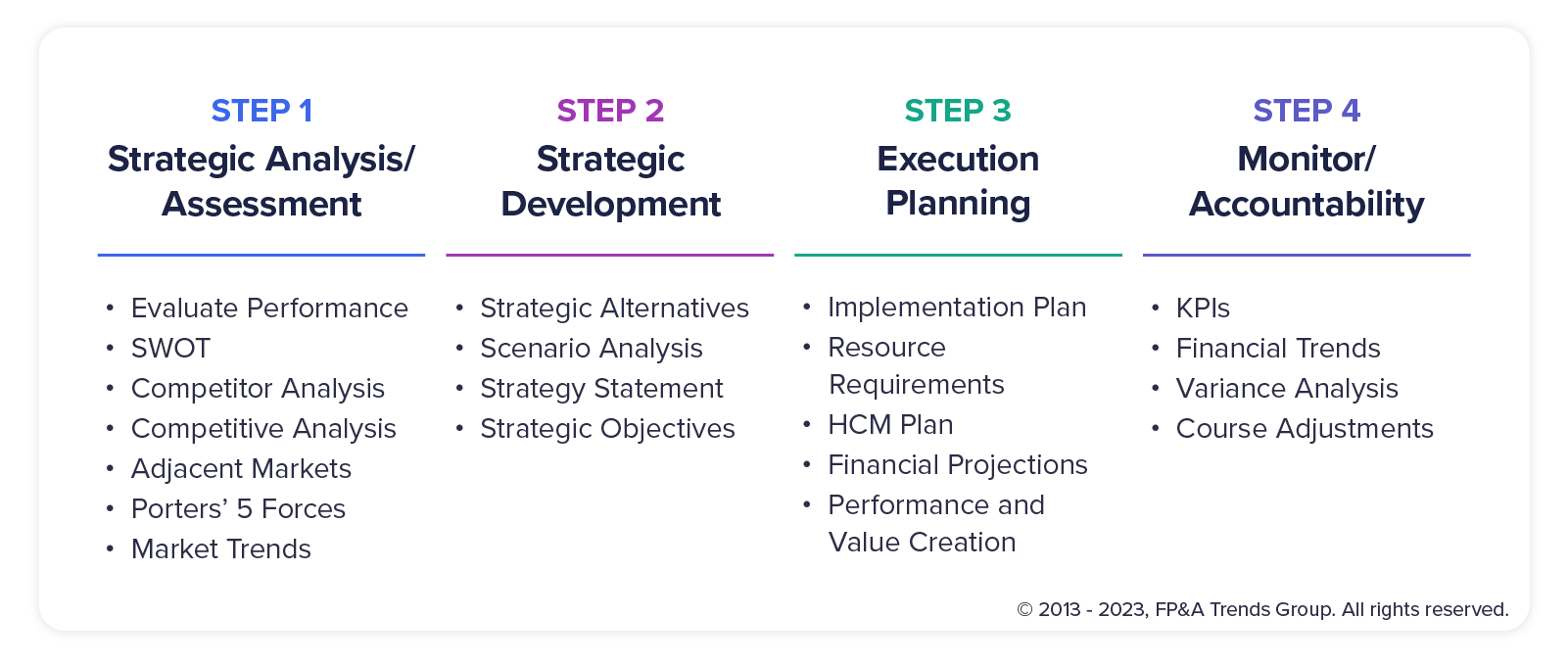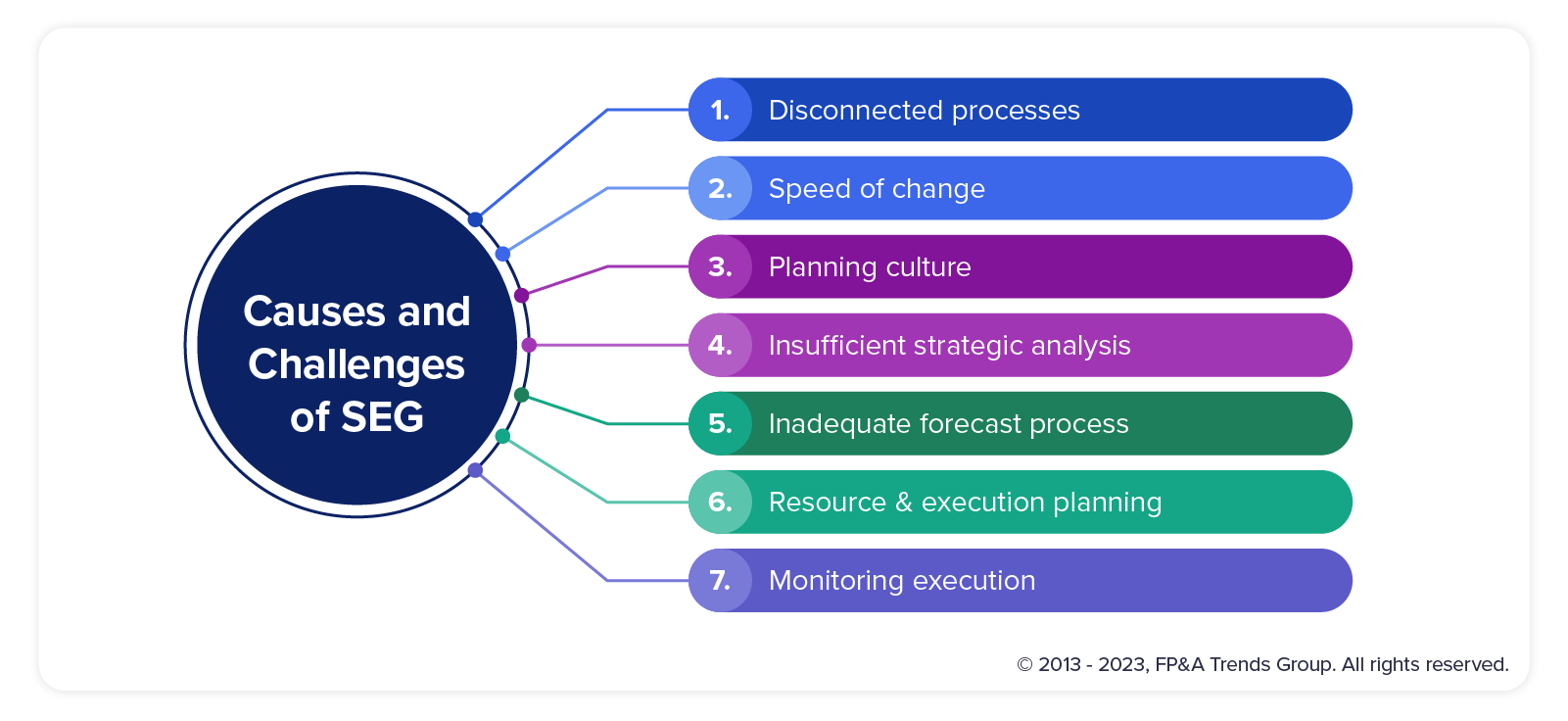Part 1: Identifying the strategy-execution gap and why it happens
Strategy and execution go hand in hand. Let’s say your family wants to fulfill your grandfather’s dream of celebrating his 80th birthday by going on a 5-star holiday with the entire extended family. You have three years to plan his dream getaway.
The plan involves coordinating different branches of your family — your siblings, cousins, aunts, and uncles. Each of them has to make their own family schedule align with the trip, as well as save money to cover the costs of travel, accommodations, food, and more. Without proper coordination among all your family members, and concerted steps to put money aside for the trip, grandpa’s birthday dream may be a bust.
Similarly, although probably more complex, coordinating business strategy and execution is critical. Strategy defines overall company objectives, and execution brings that strategy to life.
A great strategy doesn’t mean much without proper execution. Yet many organizations are dealing with a substantial disconnect between their strategy and execution. The organizational layers that usually exist between strategy and execution bring significant challenges, even in leading companies. This phenomenon creates a strategy-execution gap (SEG).
So, what’s missing between defining strategy and executing strategy? Financial planning and analysis (FP&A) plays a crucial role in connecting the two.
Defining strategy
A key first step in closing the SEG involves how you define your strategy. As you develop your strategy, consider what it will take to keep all levels of your organization aligned and how they’ll all coordinate to execute on strategic plans.
For many people on the shop floor, strategy is often seen through a fog described in “fluffy” slogans not connected with reality. It’s important for strategic initiatives and actions to be clear and relate to what people actually do.
Strategic plans should aim to keep the business on a path to achieving objectives and profitability goals. Guilherme Saraiva, Senior Director, FP&A at Warner Bros. Discovery, recommends that strategic targets be:
- Aspirational — what the organization wants to achieve in the marketplace. Strategic targets shouldn’t be based on a bottom-up approach that reflects the status quo. And they shouldn’t simply extrapolate previous period numbers. Additionally, they should be linked to a constant strategic narrative.
- Quantitative and qualitative — a combination of financial and non-financial metrics. To make sense, strategic targets need to be in context with the competitive nature of the market and the organization’s operational data.
- Flexible — rather than figures set in stone to pursue at all costs.
When strategic targets are off-target, it reveals a far-reaching business problem — the SEG.
The strategy-execution gap: Serious, widespread, potentially disastrous
Ineffective planning processes and unrealistic strategic goals. Sound familiar? Then it’s likely you’re experiencing the SEG.
You’re not alone. In a survey of over 6,000 executives by PwC’s Strategy&1:
- Only 37% of respondents say their company has a well-defined strategy — a clear sense of where it’s heading.
- Only 35% of leaders think their strategy will lead the company to success.
When you’re contending with the SEG, you’re dealing with a loss of management control, inefficiencies, lost opportunities, increased risks, and missed goals.
Drawing from the research report, “Empowering FP&A to Bridge the Strategy-Execution Gap,” this three-part blog series explains how FP&A professionals in the field can bridge or eliminate the SEG. In creating the report, we looked at challenges from the perspective of modern FP&A professionals since they’re best-positioned to make a difference in overcoming the SEG.
The research report findings revealed insights that explain the SEG and, more importantly, how to close the SEG using modern FP&A techniques, processes, and technology.
The SEG: Seven causes and challenges
According to Jack Alexander, thought leader and author of Financial Planning and Analysis and Performance Management, there are four steps involved in executing strategy: (1) strategic analysis/assessment, (2) strategy development, (3) execution planning, and (4) monitor/accountability.
 Figure 1: Four steps in strategic planning and execution
Figure 1: Four steps in strategic planning and execution
In most organizations, senior management in boardrooms typically complete the first two steps. Execution happens at an operational level on factory floors and offices worldwide. Standing between strategy and execution are numerous layers of management, processes, priorities, issues, opinions, and preferences. Every layer compounds the SEG by decreasing visibility and providing ample opportunities for the message to get misinterpreted, diluted, and ignored.
And so, the gap starts. We found that organizations face these causes and challenges of the SEG:
 Figure 2: Causes and challenges of the SEG
Figure 2: Causes and challenges of the SEG
Addressing all seven causes and challenges can help you bridge the SEG. To learn more about the SEG, including details on how to overcome its causes and challenges — read the full report, “Empowering FP&A to Bridge the Strategy-Execution Gap.”
Coming up next in Part 2
In Part 2 of this blog series, we’ll cover how to prevail over the SEG and why FP&A can help bridge the SEG, and share the Swarovski case study, “The Role of Integrated Planning Platforms in Strategy Execution.”
FP&A could help overcome the SEG by emphasizing how the financial results and business decisions are, or not, linked to strategy. They should remind business leaders whether their strategic choices are aligned with overall corporate and business strategies.
About the authors
Michael Coveney, Head of Research at FP&A Trends Group, has over 40 years of experience in designing and implementing software solutions that combine ‘best management practices’ with technology to improve the efficiency and effectiveness of planning, budgeting, forecasting and reporting processes. He has conducted senior management workshops with leading organizations around the world and led courses for the American Management Association and Antwerp Management School on the topic of Corporate Performance Management. His energetic style and extensive experience led him to become a regular speaker at many international events and the author of many articles and books. His latest, ‘Budgeting, Planning and Forecasting in Uncertain Times’ is published by John Wiley & Sons. In recent years he has focused on the role of IT within FP&A departments.
Larysa Melnychuk, CEO at FP&A Trends Group, is an accomplished FP&A professional and thought leader with over 20 years of experience in senior finance roles at top-tier companies. In 2016, she founded the FP&A Trends Group, a global organization that offers valuable insights, advisory services, and training to finance professionals seeking to stay ahead of the curve. Under her leadership, the FP&A Trends Group has conducted 20 innovative research and insight projects, including the widely recognized FP&A Trends Maturity Model. She also created the International FP&A Board, which has held over 200 meetings for finance leaders from 30 chapters across 16 countries on four continents. As a founder of the AI/ML FP&A Committee, Larysa is committed to promoting excellence and enhancing the profession globally.
1 Strategy&. The Strategy Crisis Insights from the Strategy Profiler [Online] 2019.
Available from: https://www.strategyand.pwc.com/gx/en/unique-solutions/cds/the-strategy-crisis.pdf




